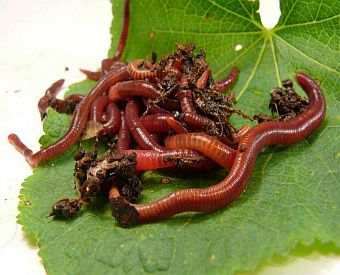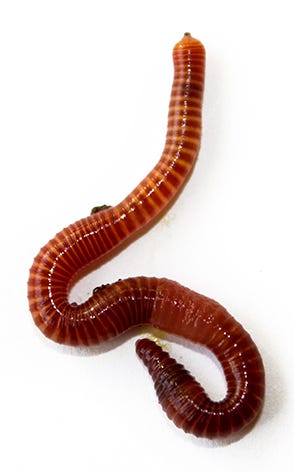Red Wiggler Worms - Reliable Decomposers for Your Compost Container
Red Wiggler Worms - Reliable Decomposers for Your Compost Container
Blog Article
Making Best Use Of the Perks of Red Wiggler Worms: A Comprehensive Manual for Home Gardeners and Urban Farmers
In the realm of lasting horticulture practices, red wiggler worms stand as unsung heroes, quietly changing organic waste into nutrient-rich castings that can work marvels for soil health and wellness. By checking out the intricacies of just how to successfully care for and take full advantage of the benefits of red wiggler worms, individuals can unlock a wide range of chances for improving the sustainability and efficiency of their gardening ventures.
Comprehending Red Wiggler Worms
Red Wiggler worms, renowned for their reliable composting capabilities, are a types of earthworms extensively made use of in vermiculture methods. These worms, clinically understood as Eisenia fetida, grow in decaying natural material, making them ideal candidates for composting.
One trick characteristic of Red Wiggler worms is their reproductive price. These hermaphroditic creatures have both female and male reproductive organs, allowing them to recreate quickly under favorable problems. A fully grown Red Wiggler can produce several spawn in a short duration, ensuring a stable populace within a composting system.

Setting Up a Worm Container
When developing a worm bin for vermiculture purposes, proper preparation and interest to detail are vital for producing a conducive atmosphere for Red Wiggler worms. Begin by choosing an ideal container for your worm bin.

Area the worm bin in a great, dark place away from direct sunlight and extreme temperature levels. By following these actions, you can set up a thriving worm bin that will successfully refine natural waste right into nutrient-rich vermicompost for your garden.
Feeding and Maintaining Worms
Making sure a well balanced and healthy diet is crucial for the health and performance of Red Wiggler worms in a vermiculture system. Red Wigglers are voracious eaters, efficient in consuming their own body weight in raw material daily. To maintain a flourishing worm populace, it is necessary to offer them with a selection of food scraps such as vegetables and fruit peels, coffee grounds, tea bags, and smashed eggshells. It is important to stay clear of feeding them citrus fruits, onions, garlic, dairy products, meat, and oily foods as these can be hazardous to the worms or trigger undesirable smells in the container.
Proper moisture degrees are also essential for the well-being of Red Wiggler worms. The bed linen should really feel like a damp sponge, offering sufficient moisture for the worms to breathe with their skin. Consistently check the dampness levels and change by adding water or dry bed linen product as needed. Furthermore, preserving proper temperature level problems in between 55-77 ° F(13-25 ° C )will make certain optimum worm activity and reproduction. By carefully checking their diet plan, moisture, and ecological problems, home garden enthusiasts and urban farmers can sustain a healthy and balanced and efficient Red Wiggler worm populace for composting objectives.
Gathering Worm Spreadings
To successfully draw out nutrient-rich worm castings from the vermicompost, a systematic harvesting procedure is necessary for optimizing the composting advantages. Red Wiggler Worms. The initial step in harvesting worm castings is to encourage the worms to move to one side of the bin. This can be achieved by putting fresh food scraps on one side and leaving the opposite side uninterrupted for a couple of days. As soon as most of worms have actually dodged with fresh food, the castings can be collected from the contrary side.
After the castings have been collected, it is essential to divide any kind of staying worms from the castings to avoid damaging them during storage or application. One efficient method is to develop conical heaps of spreadings under brilliant light. Worms will naturally relocate far from the light, enabling for simple separation and removal.
Finally, the collected worm castings need to be kept in a trendy, dark, and completely dry area to maintain their top quality and effectiveness as a nutrient-rich soil change. By adhering to these actions, home gardeners and city farmers can make the most of the benefits of red wiggler worms in their vermicomposting systems.
Using Worm Castings in Horticulture
The unification of nutrient-rich worm spreadings into garden soil can considerably improve plant growth and overall soil health. Worm castings, additionally known as vermicast, are an all-natural fertilizer created by red wiggler worms as they break down raw material. These castings are abundant in crucial nutrients like nitrogen, phosphorus, potassium, and useful germs that promote plant growth and enhance dirt structure.
When utilizing worm spreadings in horticulture, it is vital to blend them extensively into the dirt or use them as a leading dressing around plants. The slow-release nature of worm spreadings ensures a constant supply of nutrients to plants in time, lowering the threat of nutrient leaching and advertising lasting soil fertility. Additionally, worm castings he said help enhance soil oygenation, water retention, and microbial task, developing a healthy setting for plant origins to grow.

Final Thought
In conclusion, the use of red wiggler worms in home horticulture and urban farming can substantially benefit dirt health and wellness and plant development. By recognizing just how to establish up and preserve a worm bin, feed the worms appropriately, and harvest their nutrient-rich castings, gardeners can maximize the benefits of these earthworms.
In the world of lasting horticulture methods, red wiggler worms stand as unhonored heroes, quietly changing natural waste right into nutrient-rich castings that can work marvels for dirt health.When developing a worm bin for vermiculture purposes, correct prep work and focus to detail are important for producing a conducive environment for Red Wiggler worms. The very first action in gathering worm castings is to motivate the worms to migrate to one side of the container. Worm castings, go to the website likewise known as vermicast, are an all-natural plant food produced by red wiggler worms as they break down natural issue. By understanding exactly how to set up and preserve a worm bin, feed the worms properly, and harvest their nutrient-rich spreadings, gardeners can take full advantage of the benefits of these earthworms.
Report this page